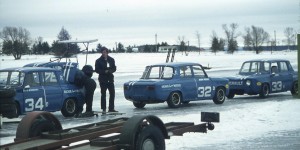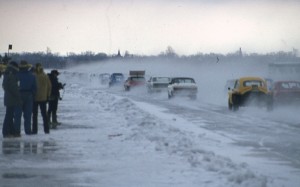
We have begun the restoration/race prep of the Luigi CSL. We have decided to return the car to the same livery it wore in 1976, the year it won the European Touring Car Championship.
The first order of business was to remove the wide Group 5 fenders and the front air dam that were installed in the 1980’s.

It was interesting to grind down through the old paint and bondo and find all the old layers of paint the car wore through its racing career. Down at the very bottom we found the black/green/red paint from its original Castrol livery.
When we removed the front air dam we found that the front valance was in need of some repairs. We want to make the new air dam removable to aid in loading/unloading the car from the trailer and need a solid base to mount it.

The old valance was cut out, and a new one was grafted in.
Once the old fenders were removed and the valance repaired, the engine was taken out and shipped down to Terry Tinney for a freshening. The car was then taken to the painter’s shop.
Jim Froula from Racecraft, visited the CSL recently at the painters.
He said that there is not too much progress to report except that they have stripped all the paint and filler from both sides of the car and it’s in amazingly good condition underneath all that mess that was there. No rust and only the slightest indication of contact at each front corner.
The fiberglass parts turned out to be a real disappointment. They are nowhere near close to fitting.

The rear flares are about 2″ narrower than the fronts, but the shape is okay so making them a little wider will be easy.
The front flares are just wrong in every way. The good news is that the fiberglass guy we have on the job can make anything so I’m confident it will look right in the end it was just a hurdle we didn’t expect.
The main reason for Jim’s visit was to get really detailed about how the flares need to look, how much gap to allow around the tires, how far they need to protrude from the fenders, how they need to be attached, etc.

They reviewed a whole bunch of photos, made a bunch of notes and measurements and they now have some clear guidance on how to proceed. More importantly they are still confident that our schedule is realistic and promise to meet our date for the Sonoma Motorsports Festival in May.
Jim has have allowed a month after painting to reassemble everything and maybe even get it out to a track day before we head south with it.
On the engine side of things. The injection pump and injectors are out to the specialist that will thoroughly clean them out and make sure they are flowing properly.





